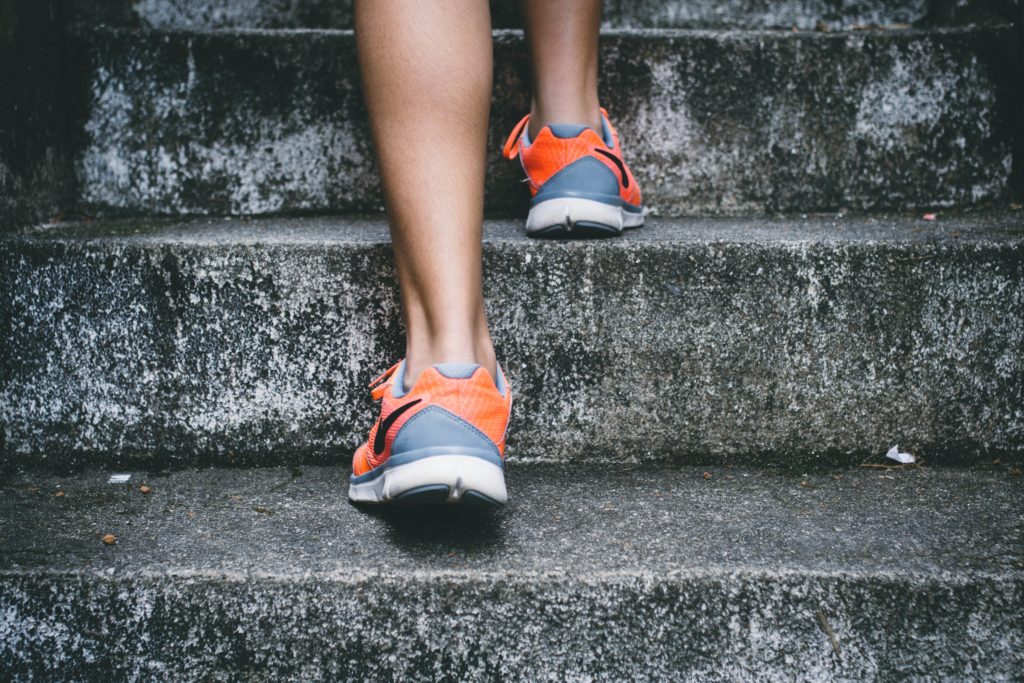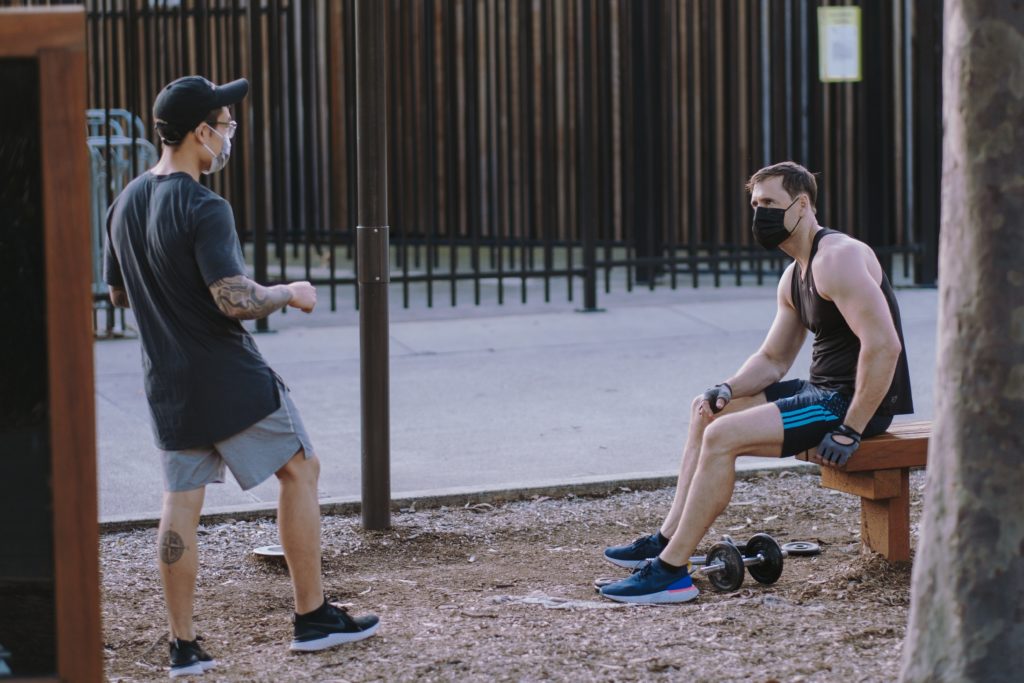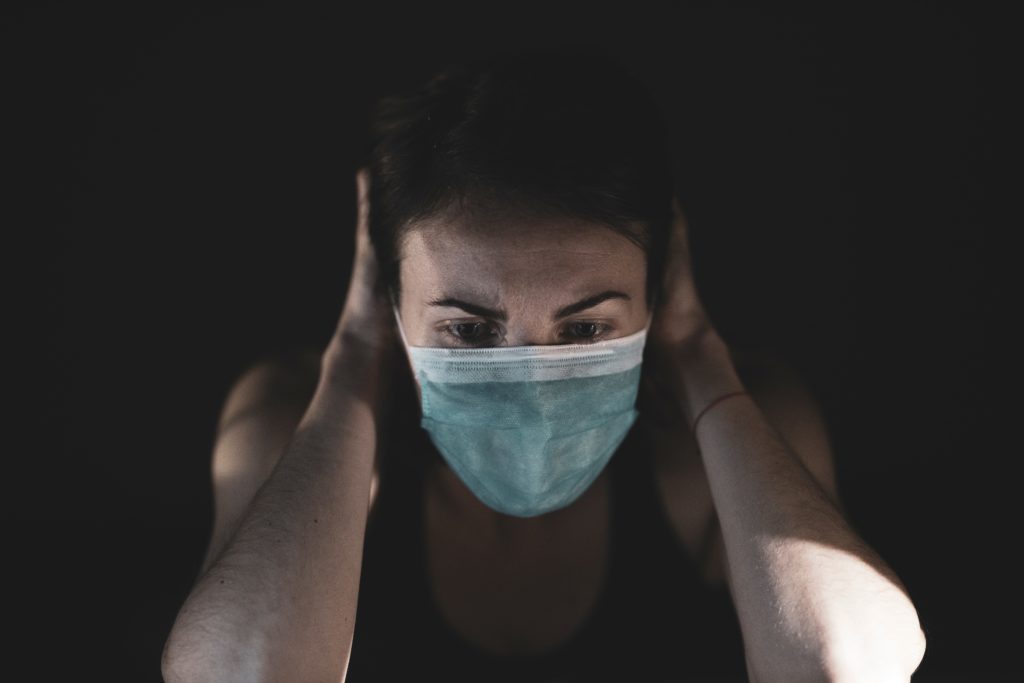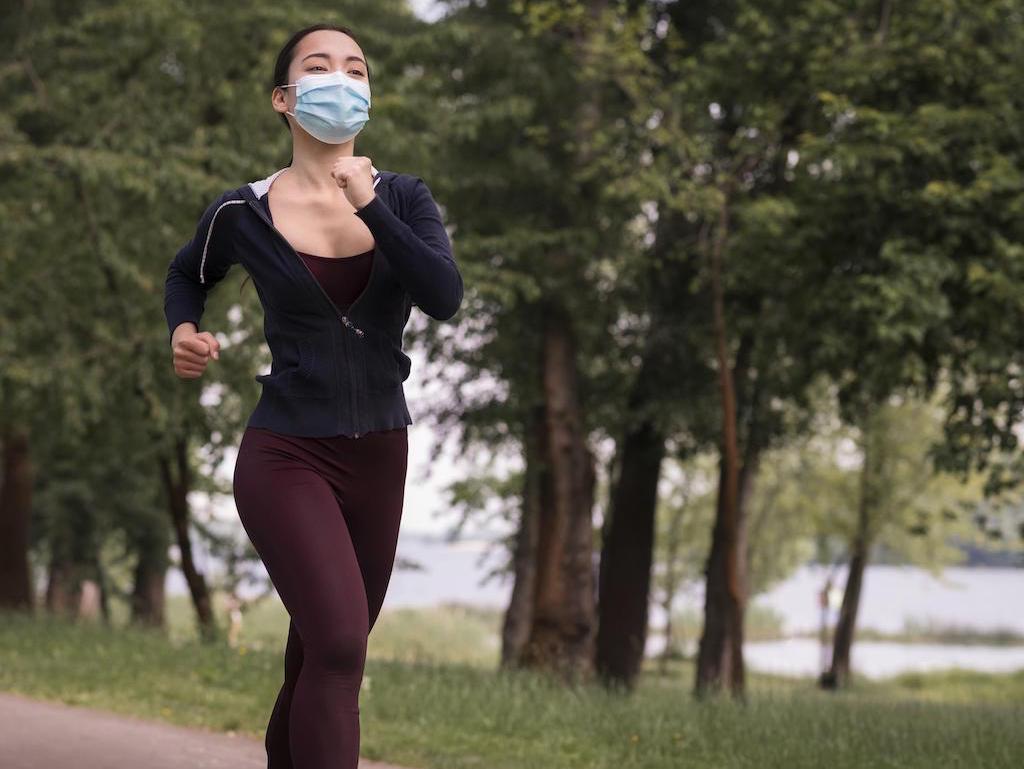4 Mins Read
Starting from yesterday, it’s compulsory to wear a mask both indoors and outdoors in Hong Kong (and in many other countries too!) due to a resurgence in local case transmission. Wearing a mask should not exempt you from continuing with your exercise regime, but what is true is you need to know a few things before you embarked on masked fitness whether you are a seasoned athlete or just an enthusiast. Below we share some tips & advice on how to keep exercising efficiently while wearing a mask in the hot and humid conditions of our gorgeous Hong Kong summer.

Start Slow & Easy: Get Used To The Mask
As we’ve all got some experience with covering our face while walking or taking public transport, we know that it can cause some unwanted effects, such as difficulty breathing, dizziness, or even headaches. As we exercise, our body goes through massive changes on a cellular level. An average adult inhales and exhales around 7 litres of air per minute (it’s called minute ventilation or respiratory minute volume and the number varies between 6-8 litres).
This number increases by a lot when we exercise, as our body uses more oxygen and produces more carbon dioxide. To cope with this extra demand, your breathing has to increase up to about 40–60 times a minute (100 litres of air) during exercise. The problem is that when we cover our faces with masks it becomes more challenging to do this – and we’re not just talking about how wet your mask gets from sweat.
World-renowned author and breathing practitioner Patrick McKeown, who has trained thousands of professional athletes, advises to start exercising with a mask for 10-15 minutes first and to always remove it after a maximum of 3-4 hours.
“Using the mask will increase the feeling of air hunger resulting from the accumulation of carbon dioxide, and what you need to do is to gradually decrease the sensitivity to CO2”, McKeown explains.
The best way to decrease your sensitivity and increase your tolerance to CO2 is to slow down your breath and train yourself with nasal breathing before your workout.

Get Your Engine Fuelled In Advance
Before you go out for your next run or hike, make sure you get your lungs prepared. About 90% of city dwellers breathe fast and shallow, which makes us more prone to anxiety and performance fatigue. Both are the result of the vertical breathing, meaning we use our chest, shoulders and even neck, aka our auxiliary breathing muscles, instead of our real tools.
How can we change that? Start with a few slow breaths moving your belly and diaphragm (your primary breathing muscles). Your entire middle should expand as you inhale and squeeze as you exhale.
“It’s just reminding your body how it used to breathe,” explains Dr. Belisa Vranich, author of Breathing For Warriors who’s been training first responders, world elite athletes, and the US military for the last 20 years. “The good news is both these movements (expanding on inhale, contracting on exhale) will lead you to stronger abs and core muscles as well as better oxygenation”, adds Vranich.
Make Sure To Breathe Through Your Nose
Our nose is the first line of defence, and it plays a big role in filtering the air, allergens and foreign bodies before they get into our lungs. Breathing through the nose will help you build up CO2 tolerance, despite making you feel that you are not fast or efficient enough.
Extra bonus? You will leave fewer water droplets on your mask and keep it drier while decreasing your exposure to viruses and pollution. Ideally, you have a few cloth masks in hand to change them, depending on the duration of your workout.

Ladies, Be Extra Careful!
Are you a female under 48-50 years of age? Then it may or may not surprise you to know that you need to be extra mindful, especially during the luteal phase of your menstrual cycle. This is the time when your carbon dioxide levels drop by 25% caused by hormonal changes (women really DO have it harder), and that typically means faster breathing, an increased heart rate, and a tendency towards fatigue and body pain, amongst other things (!).
So what does that mean from a practical standpoint? Be gentle with your body, take it easy and observe your body signals. If you feel unwell or uncomfortable – take a proper break. This obvious and simple piece of advice is equally applicable to everyone else. Summertime in Hong Kong can be quite tough to our physical condition. Exercise safely and stay healthy.
Lead Image Kay Lau via Unsplash.




